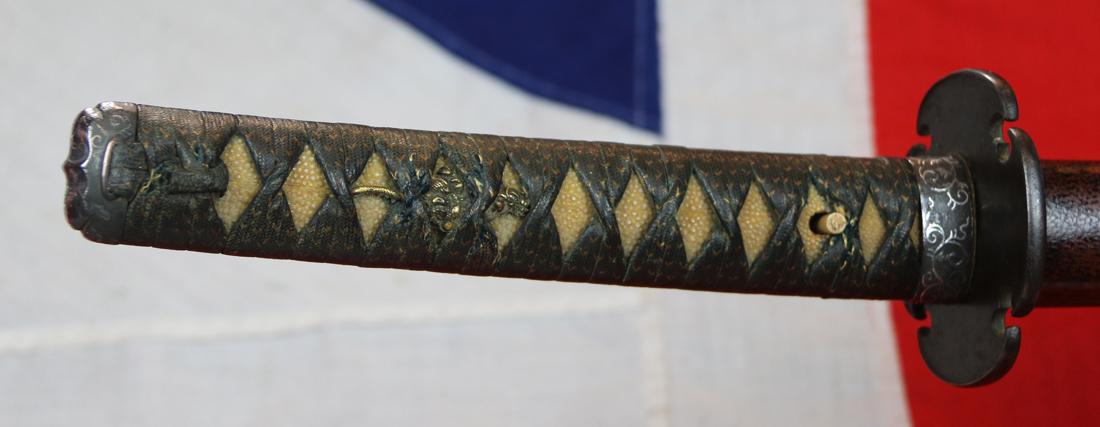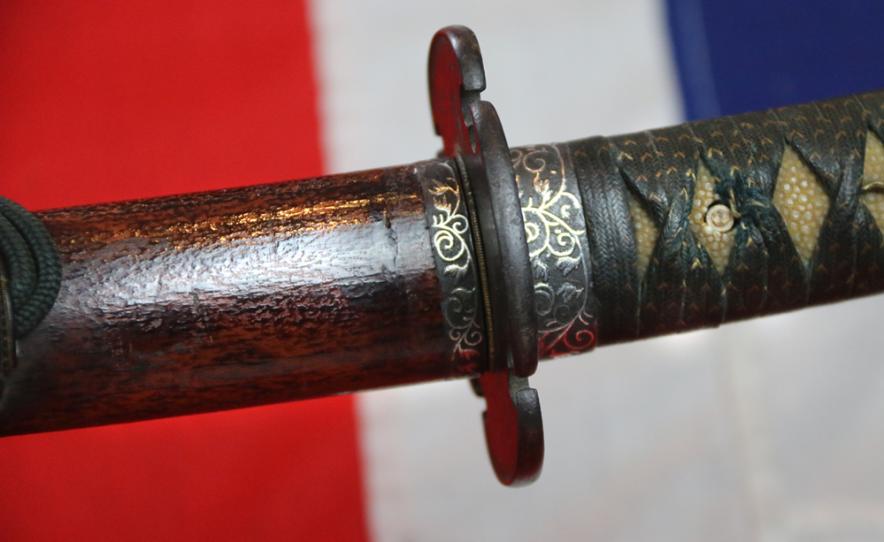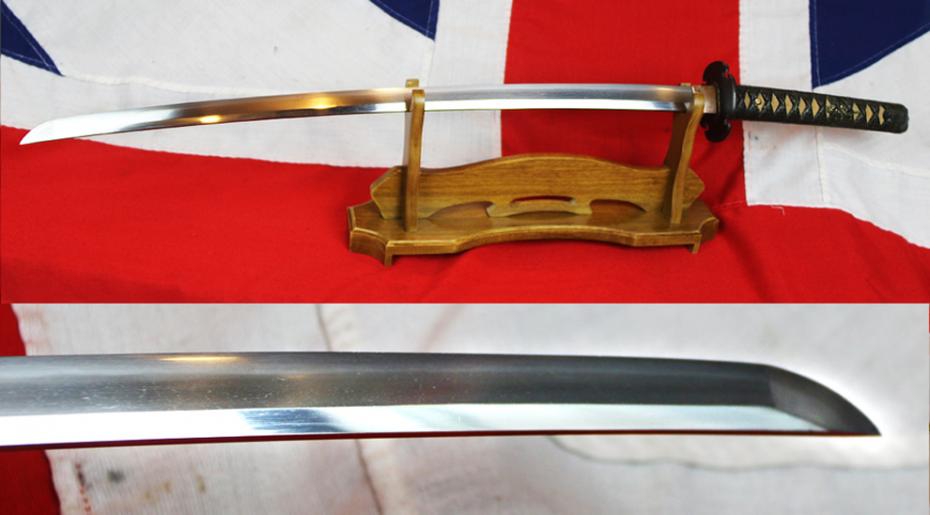A Most Fine Museum Worthy Ancient Koto Era Handachi Tachi Made Around 1450
A stunning, ancient Koto sword, formerly part of the esteemed Ron Gregory Collection [world renown Japanese Sword Reference Book Author]. Complete and untouched, with all its original Edo period koshirae [mountings] including a most rare tsukaito [hilt binding] of silk interwoven with brass wire in a herringbone pattern, [a remarkably complex and skillfull achievement]. The o-suriage blade is in original polish and looks singularly fine and beautiful. The Higo style koshirae are all a fully matching inlaid with silver curlicues of Arabesques on an iron ground. This is a simply remarkable early tachi, and an absolute joy to hold, admire and indeed own. We have a complete summary of its details that was undertaken some years ago, . The aged tsukaito is surface worn in areas but its beauty and rarity is exceptional. A blade of most impressive, elegant and deep curvature, typical of the early samurai sword of the Nambokochu to Muromachi era [1333 to 1573]. As is often with ancient swords the story of it's use starts in the era before it was actually made, by it's master smith.The Nanbokochu era was spanning from 1336 to 1392, it was a period that occurred during the formative years of the Muromachi bakufu of Japan's history.
The Imperial seats during the Nanboku-cho period were in relatively close proximity, but
geographically distinct. They were conventionally identified as:
Northern capital : Kyoto
Southern capital : Yoshino.
During this period, there existed a Northern Imperial Court, established by Ashikaga Takauji in Kyoto, and a Southern Imperial Court, established by Emperor Go-Daigo in Yoshino.
Ideologically, the two courts fought for fifty years, with the South giving up to the North in 1392.
However, in reality the Northern line was under the power of the Ashikaga shoguns and had little real independence. This sword would very likely have been made before and used in the Onin War (1467-1477) which led to serious political fragmentation and obliteration of domains: a great struggle for land and power ensued among bushi chieftains and lasted until the mid-sixteenth century. Peasants rose against their landlords and samurai against their overlords, as central control virtually disappeared. An early Japanese print in the gallery shows a samurai receiving his reward of a fine tachi [such as this one] from his shugo daimyo lord. The shugo daimyo were the first group of men to hold the title "daimyo". They arose from among the shugo during the Muromachi period. The shugo daimyo held not only military and police powers, but also economic power within a province. They accumulated these powers throughout the first decades of the Muromachi period.
Major shugo daimyo came from the Shiba, Hatakeyama, and Hosokawa clans, as well as the tozama clans of Yamana, Ouchi, and Akamatsu. The greatest ruled multiple provinces.
The Ashikaga shogunate required the shugo daimyo to reside in Kyoto, so they appointed relatives or retainers, called shugodai, to represent them in their home provinces. Eventually some of these in turn came to reside in Kyoto, appointing deputies in the provinces.
The Onin War was a major uprising in which shugo daimyo fought each other. During this and other wars of the time, kuni ikki, or provincial uprisings, took place as locally powerful warriors sought independence from the shugo daimyo. The deputies of the shugo daimyo, living in the provinces, seized the opportunity to strengthen their position. At the end of the fifteenth century, those shugo daimyo who succeeded remained in power. Those who had failed to exert control over their deputies fell from power and were replaced by a new class, the "sengoku daimyo", who arose from the ranks of the shugodai'K and Ji-samurai
Code: 23254
Price
on
Request










